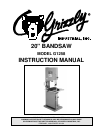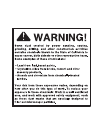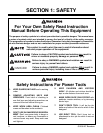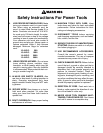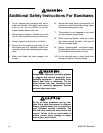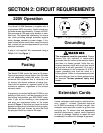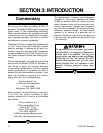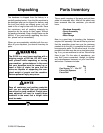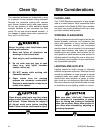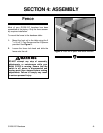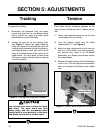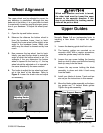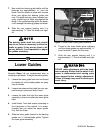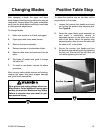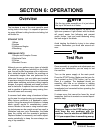
G1258 20" Bandsaw -5-
220V Operation
SECTION 2: CIRCUIT REQUIREMENTS
Your Model G1258 Bandsaw is supplied with a
single phase 220V only motor. Under normal use,
the motor draws approximately 15 amps @ 220V.
We recommend a 20 amp circuit breaker or slow-
blow fuse. This should be satisfactory for normal
use, while providing enough protection against
motor damage caused by power surges. If fre-
quent circuit failures occur when using the band-
saw, contact our service department or your local
electrical contractor.
A plug is not supplied. We recommend using a
NEMA 6-20. See Figure 1.
The Model G1258 should be fused at 20 amps.
Fusing at amperage ratings higher than 20 amps
will not adequately protect the motor. You are
cautioned that equipment that is returned to us
for service that shows evidence of being over-
fused will be repaired or replaced totally at the
customer’s expense, regardless of the present
warranty status.
In preparing to connect the Model G1258 to your
existing or new circuit, it will be necessary to con-
nect a plug that matches your 220V/240V recep-
tacle. If you will be installing a new receptacle
and plug, we recommend either of the styles
shown in Figure 1. Note that you have the choice
between simple plug-in and twist-lock plug styles.
Whichever style you choose, be sure that both
the plug and outlet are rated at 20 amps.
Fusing
220V/240V
20A
NEMA 6-20
220V/240V
20A
NEMA L6-20
Standard
Locking
Figure 1. Two typical outlet/plug configurations.
If used, extension cords must be rated hard ser-
vice – grade S – or better. Conductor size must
be 12 AWG for cords up to 50 feet in length. Your
extension cord must also contain a ground wire
and plug pin. To ensure safe and dependable
machine performance, inspect cords frequently
for wear or damage. Replace or repair the cord
immediately if evidence of damage is apparent.
Extension Cords
Grounding
This equipment must be grounded. Please
ensure that this machine is continuously
grounded from the motor to the machine frame
and then to a known ground. Verify that any
existing electrical outlet and circuit you intend
to plug into is actually grounded. If it is not, it
will be necessary to run a separate 12 A.W.G.
copper grounding wire from the outlet to a
known ground. Under no circumstances should
the grounding pin from any three-pronged plug
be removed. Serious personal injury may
occur.



